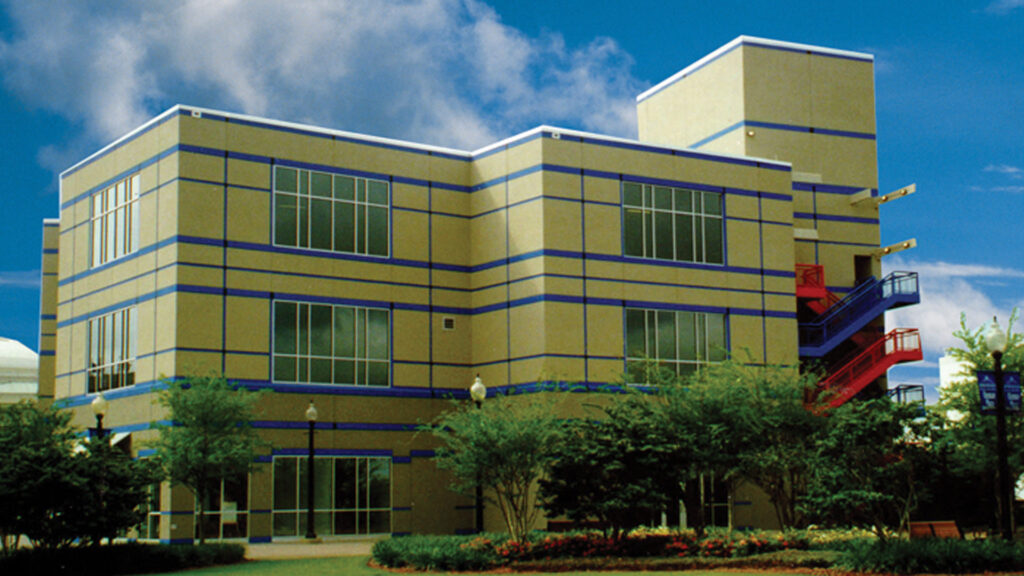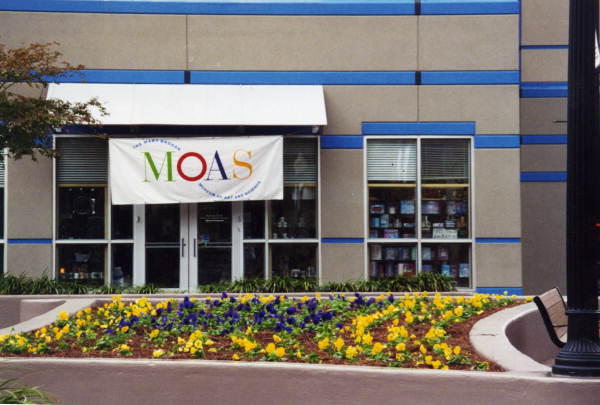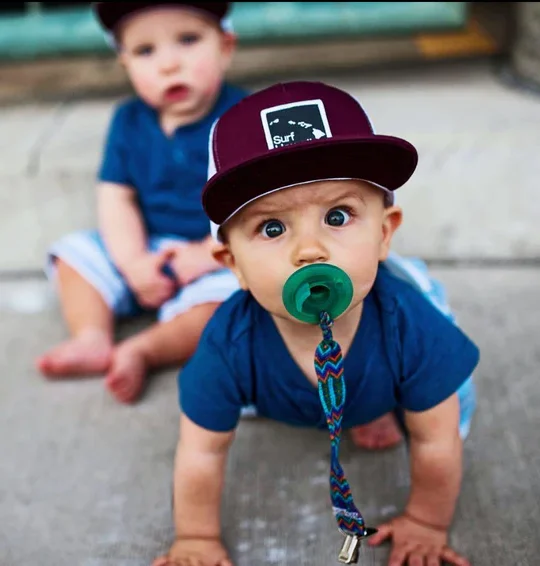The Mary Brogan Museum became downtown Tallahassee’s cultural heart for more than a decade old. This unique space combined visual arts and interactive science exhibits under one roof at 350 South Duval Street. The museum’s story began in the early 1990s when The Museum of Art/Tallahassee and the Odyssey Science Center merged into one institution.
The museum opened its doors in 1998, and the merger was complete by 2000. Visitors discovered amazing connections between art, science, mathematics, and technology in this special place. The museum hosted several popular exhibitions including “Bodies: The Exhibition” in 2009 and “Titanic: The Artifact Exhibition” in 2011. Money problems eventually caught up with this beloved Tallahassee landmark. The museum’s bank balance of $70,000 couldn’t cover its debts of over $100,000, which led to its permanent closure in 2013. The space later found new life as a non-profit innovation center.
The story behind the Mary Brogan Museum of Art and Science
Downtown Tallahassee gained a vital cultural landmark when two struggling institutions joined forces in the late 1990s. The Mary Brogan Museum of Art and Science emerged from two distinct educational entities. Each brought their own vision to create something greater than its parts.
How the museum was formed from two institutions
Tallahassee saw two cultural organizations with different but complementary missions establish themselves in the early 1990s. The Museum of Art/Tallahassee opened its doors in 1990 and focused on visual arts exhibitions and education. The Odyssey Science Center started operating in 1991 with its focus on hands-on scientific learning.
Both organizations operated separately at first and worked to build their own audience and educational programs. Financial challenges led their leadership to see a chance for collaboration. They made a strategic decision in 1998 to share a common building. This allowed visitors to experience both art and science in one location.
The arrangement became such a soaring win that both organizations merged into a single entity by 2000. This innovative combination gave Tallahassee residents a chance to find both artistic inspiration and scientific discovery under one roof. The merger showed a forward-thinking approach to cultural education that acknowledged how creative and analytical thinking connect.
Why it was named after Mary Brogan
The museum’s name honors a woman whose passion for education and arts left a lasting mark on Florida. Mary Brogan worked as an educational consultant during her husband Frank Brogan’s time as Florida’s Lieutenant Governor. She showed steadfast dedication to improving educational opportunities and supported arts education across the state throughout her career.
Mary Brogan died from cancer in 1997, just before the museum opened to the public. The museum bears her name as a posthumous tribute to her dedication to arts and education—fields that lined up perfectly with its dual mission.
This name choice connected the museum to Florida’s political world while highlighting the importance of education supporters. Mary Brogan’s legacy lives on through an institution that embodies her belief in artistic expression and scientific inquiry’s power to reshape communities.
Its location in downtown Tallahassee
The Mary Brogan Museum stood at 350 South Duval Street, right in downtown Tallahassee’s Kleman Plaza. This strategic spot put it at the heart of the city’s cultural district, making it available to residents, students, and tourists.
The building stood on City of Tallahassee’s land, which showed the public-private partnership behind the museum’s development. The museum transferred its sub-lease to Tallahassee Community College from Leon County Schools in 2003, which strengthened its educational ties.
The museum’s spot in Kleman Plaza placed it within the Tallahassee Downtown Improvement Authority (TDIA) special assessment district. The Florida legislature created TDIA in 1971 to promote downtown Tallahassee as a vibrant center for business and entertainment. The museum helped this mission by drawing visitors downtown and enhancing the capital city’s cultural scene.
Money problems ended up challenging the museum’s operations—as noted by those who knew its history: “financial problems plagued the downtown Tallahassee museum from the start”. Yet its central location helped make it a key cultural landmark during its active years.
What made the museum unique for locals
The Mary Brogan Museum gave Tallahassee residents a unique cultural experience. No other institution in the region matched its special mix of education and entertainment. Local people loved visiting this place to get both artistic inspiration and scientific knowledge.
Blending art and science under one roof
The Mary Brogan Museum stood out because it brought different disciplines together naturally. The museum’s main goal was “stimulating interest in, and understanding of, how visual arts, sciences, mathematics, and technology connect through exploration and discovery experiences”. This approach showed how creative and analytical thinking work together.
The museum’s layout told its own story. Two floors held interactive science exhibits about energy, machines, health, and physics. The third floor had an art gallery that showed world-class exhibitions from different time periods. Guests could move easily between science and art areas, which helped them make connections they might have missed otherwise.
Most museums focus on either art or science. The Mary Brogan Museum created something different – a place where both subjects could grow together. Local families loved this approach, especially when they wanted their children to learn about both fields at once.
Interactive exhibits and hands-on learning
Hands-on experiences made this museum special. Instead of putting everything behind glass, the museum let people touch, explore, and try things out. People of all ages could understand complex ideas through these interactive displays.
A live bee hive display became one of the most popular features. People could watch these amazing insects up close. The museum also had Florida aquatic species on display to teach visitors about local environmental issues. These living exhibits left lasting memories while teaching important lessons about ecology.
Local kids saw the museum as a fun place to learn. One student, Shariah Davis, said the museum felt “like a second home” where she could keep “learning and having fun at the same time”. Many young people in Tallahassee shared this feeling. The museum became an extension of their school – a place that encouraged their curiosity.
Community events and educational outreach
The Mary Brogan Museum became a community hub through its programs and educational activities. Learning opportunities reached beyond the building’s walls.
“Camp All That!” became the most popular program. This day camp mixed art and science activities during school breaks. Working parents particularly valued this program as it gave their children something meaningful to do.
Special learning spaces made the museum even more valuable. StarLab offered planetarium experiences, while EcoLab showed off aquatic life in tanks. These spaces helped support what kids learned in school. The WCTV Weather station let visitors learn about meteorology hands-on.
The museum worked with schools to develop teaching materials and help local teachers. A partnership in 2004 brought together the Florida Department of Education, the Florida Department of State, and the Institute on World War Two and the Human Experience. Together they created American History materials on CDs. This resource included historical education materials, personal stories, and interviews. The project showed how dedicated the museum was to improving education throughout the region.
Top 5 exhibits that locals still talk about
The Mary Brogan Museum left an indelible mark on Tallahassee locals through five remarkable exhibitions. These collections drew thousands of visitors and helped shape the institution’s cultural identity.
1. Bodies: The Exhibition (2009)
“Our Body: The Universe Within” made its northwest Florida debut at the Mary Brogan Museum of Art and Science on January 17, 2009. The exhibition showcased nine polymer-preserved human bodies and 75 anatomically detailed organs. The display ran through May 25, revealing the human anatomy’s complexities to Tallahassee residents. Admission prices ranged from $12-$24, and visitors could opt for a $5 audio guide to boost their learning experience. The exhibition became one of the museum’s most discussed events, despite national controversy surrounding such displays.
2. Titanic: The Artifact Exhibition (2011)
Visitors experienced maritime history from September 2 to October 2, 2011. The exhibition’s timing coincided with the Titanic’s 100th anniversary of its tragic sinking. More than 100 authentic artifacts from the ship’s debris field shared compelling human stories. Local residents still talk about the interactive elements, particularly the touchable iceberg that created a physical link to history. Each visitor received a replica boarding pass of an actual passenger and learned their fate at the memorial wall.
3. Dale Chihuly’s Seaforms (2003)
The museum brought Dale Chihuly’s stunning “Seaforms” exhibition to Tallahassee in 2003. The collection displayed the renowned artist’s glass sculptures inspired by ocean life. Chihuly’s bold colors and flowing forms created an ethereal atmosphere. North Florida residents had a rare chance to see world-class visual arts without traveling to major cities.
4. Kokoro Sanrio Animatronic Dinosaurs
The museum regularly featured Kokoro Sanrio animatronic dinosaurs during its operation. These prehistoric creatures moved and roared as guests walked by. Young visitors especially loved this blend of entertainment and education. The exhibition made science available through interactive displays that sparked curiosity while teaching scientific concepts.
5. The Kinsey Collection (2009)
The museum hosted “The Kinsey Collection: Shared Treasures of Bernard and Shirley Kinsey – Where Art and History Intersect” from September 2009 through February 2010. This exhibition displayed rare art, artifacts, books, documents, and manuscripts spanning 400 years of African American history. Red and golden walls symbolized progress toward racial equality. The collection drew 12,000 students and 35,000 adults. Florida’s K-12 curriculum later incorporated the exhibition as a teaching tool for African American history, extending its impact beyond the museum.
Educational programs and the impact on children
The Mary Brogan Museum made its mark on Tallahassee families through educational programs that touched thousands of local children’s lives.
Camp All That! and other youth programs
“Camp All That!” stood as the centerpiece of the Mary Brogan Museum’s youth outreach. This unique day-camp program seamlessly combined art and science education. Students learned through creative activities, scientific experiments, and artistic discovery. The museum’s core team kept “Camp All That!” running through summer 2012 despite financial challenges, showing their steadfast dedication to children’s education.
These programs shaped many Tallahassee students’ growth. Student Shariah Davis captured this feeling: “my childhood and my experiences… I don’t want to ever stop having those experiences learning and having fun at the same time”. Many children shared this view and saw the museum as “like a second home”.
StarLab and EcoLab experiences
Special educational spaces made the museum a place of discovery and wonder. StarLab brought astronomy and celestial sciences to life, sparking many children’s lifelong passion for space exploration. The EcoLab’s aquatic life tanks let young visitors see and understand underwater ecosystems up close.
The WCTV Weather station added another dimension by teaching meteorology through hands-on displays and demonstrations.
Partnerships with schools and local educators
Local schools found a valuable ally in the Mary Brogan Museum. The building buzzed with school groups as students came “eager to learn about the wonders of the arts and sciences”.
The museum’s closure left a void in Tallahassee’s educational landscape. One observer summed up the impact: “the big loser, children eager to learn and have fun doing it”. Downtown Tallahassee now has “just a few other places where children can learn, dream big and explore nature’s beauty”.
Why the museum closed and what came after
Financial troubles ended up sealing the Mary Brogan Museum of Art and Science’s fate, even with its cultural significance and popular exhibits. The institution closed in 2013, marking the end of an era for Tallahassee’s cultural world. This closure opened doors to new opportunities for the historic building.
Financial challenges and failed funding bids
The Mary Brogan Museum faced financial difficulties from day one. The building’s design called for four floors but construction limited it to three, which created lasting structural problems. The museum’s final days showed just $70,000 in reserves while debt to banks and creditors exceeded $100,000.
Revenue generation through exhibit rentals didn’t meet expectations. These displays failed to bring enough money to keep operations going. The economic recession hit hard and cut federal and state grants, which pushed many nonprofits toward financial disaster.
The museum’s last hope disappeared in early 2013 when Leon County rejected a crucial $150,000 funding request. The core team members resigned their positions, including Tallahassee Community College President Jim Murdaugh and City Commissioner Gil Ziffer. Ziffer worried that “the museum’s debt will just continue to climb”.
Attempts to sell artwork and raise funds
The Mary Brogan Museum’s leadership worked hard to fight mounting financial pressures throughout 2013. The board of directors worked with Tallahassee Community College on various fundraising initiatives. They made the tough choice to sell parts of the museum’s artwork collection.
Board member Felicia Nowels pointed out some wins. They had “greatly reduced the debt” and “taken care of more than a quarter of a million dollars of debt”. The financial gap proved too large to bridge, notwithstanding that progress.
Repurposing into a nonprofit innovation center
Plans emerged in 2014 to change the former Mary Brogan Museum into a resource hub for struggling organizations. Legal negotiations about the building’s complex lease continued while the bottom floor found new use.
A complete renovation changed the 34,000-square-foot facility into TCC’s nonprofit state-of-the-art center by 2017. The rejuvenated space now features conference rooms, technology-infused training areas, and a retail incubator. WTXL-ABC 27, New Horizons Computer Learning Center, and the Institute for Nonprofit Innovation and Excellence now call this space home.
TCC President Murdaugh backed this transition from his experience on the museum’s board. He believed nonprofits needed a central support system to prevent future closures. The Mary Brogan Museum might be gone, but its educational and community service mission lives on through this new chapter.
Summing it all up
The Mary Brogan Museum of Art and Science made a lasting impression on Tallahassee’s cultural world during its 15-year run. The museum’s appeal lives on among locals who experienced its unique mix of artistic inspiration and scientific exploration. The museum’s fresh take on combining different fields created learning opportunities that other museums could not match.
The museum showed how art and science could work together perfectly under one roof. It pushed past the usual limits between different fields of study. Major exhibitions like “Bodies: The Exhibition” and “Titanic: The Artifact Exhibition” gave Florida’s capital city world-class cultural experiences. These shows would typically require trips to bigger cities.
Money problems eventually forced the museum to close, but its educational legacy lives on through thousands of children who found their passions there. Programs like Camp All That!, StarLab, and EcoLab gave kids experiences they still treasure today. The museum’s partnerships with local schools helped spread knowledge way beyond its walls.
The old museum space now serves as a nonprofit innovation center, which seems like a natural next step. Tallahassee residents lost a beloved cultural spot, but the building still helps the community in new ways. The spirit of education and community service that Mary Brogan believed in continues strong.
Looking back at what made the Mary Brogan Museum special, we see how well it connected visual arts, sciences, mathematics, and technology through hands-on learning. People lucky enough to visit found more than just exhibits. They had eye-opening experiences that built a deeper love for both creative expression and scientific discovery. Though the museum is now part of history, its effect on Tallahassee’s cultural identity remains vital.
Here are some FAQs about the Mary Brogan Museum:
How to walk around a museum?
When visiting museums like the Mary Brogan Museum of Art and Science (mary brogan museum tallahassee), walk at a moderate pace while maintaining awareness of other visitors. At the Mary Brogan Museum (the mary brogan museum of art and science), follow the suggested route or floor plan to experience exhibits in their intended order. Keep a safe distance from displays and artwork to avoid accidental damage while still enjoying full visibility.
How to act in a museum?
Proper museum etiquette at institutions like the Mary Brogan Museum of Art and Science (mary brogan museum of art and science) includes speaking quietly and silencing mobile devices. Visitors to the Mary Brogan Museum (mary brogan museum) should refrain from touching exhibits unless specifically allowed, and always supervise children closely. Remember that food and drinks are typically prohibited in gallery spaces to protect the collections.
How do I go through a museum?
When exploring the Mary Brogan Museum (the mary brogan museum of art and science), start by reviewing the museum map to prioritize exhibits that interest you most. At the Mary Brogan Museum of Art and Science (mary brogan museum tallahassee), consider beginning with permanent collections before moving to special exhibitions. Allow time for breaks in designated areas to avoid museum fatigue while taking in all the offerings.
How long does it take to walk around Transport museum?
While the Mary Brogan Museum (mary brogan museum of art and science) focuses on art and science rather than transport, most specialized museums require 1-2 hours for a thorough visit. At similar-sized institutions like the Mary Brogan Museum of Art and Science (the mary brogan museum of art and science), visitors typically spend 90 minutes to see all exhibits. Your visit duration depends on your level of interest and whether you participate in interactive displays or guided tours.
What are do’s and don’ts at the museum?
At the Mary Brogan Museum (mary brogan museum tallahassee), do follow all posted guidelines and engage respectfully with interactive exhibits. Don’t use flash photography where prohibited or lean on display cases at the Mary Brogan Museum of Art and Science (the mary brogan museum of art and science). Do take advantage of educational materials, but don’t block others’ views while examining displays for extended periods.
What do you call a person who shows you around a museum?
At the Mary Brogan Museum (mary brogan museum of art and science), these knowledgeable guides are called docents or museum educators. The Mary Brogan Museum of Art and Science (the mary brogan museum of art and science) employs trained professionals who lead tours and explain exhibits. Some museums may also refer to them as gallery interpreters or tour guides depending on their specific role.
What is the basic museum technique?
The fundamental approach used by institutions like the Mary Brogan Museum (mary brogan museum tallahassee) involves careful observation and contextual learning. At the Mary Brogan Museum of Art and Science (the mary brogan museum of art and science), this means reading labels thoroughly and considering objects in relation to their historical or scientific significance. Effective museum technique also includes pacing yourself to absorb information without overwhelming your senses.








